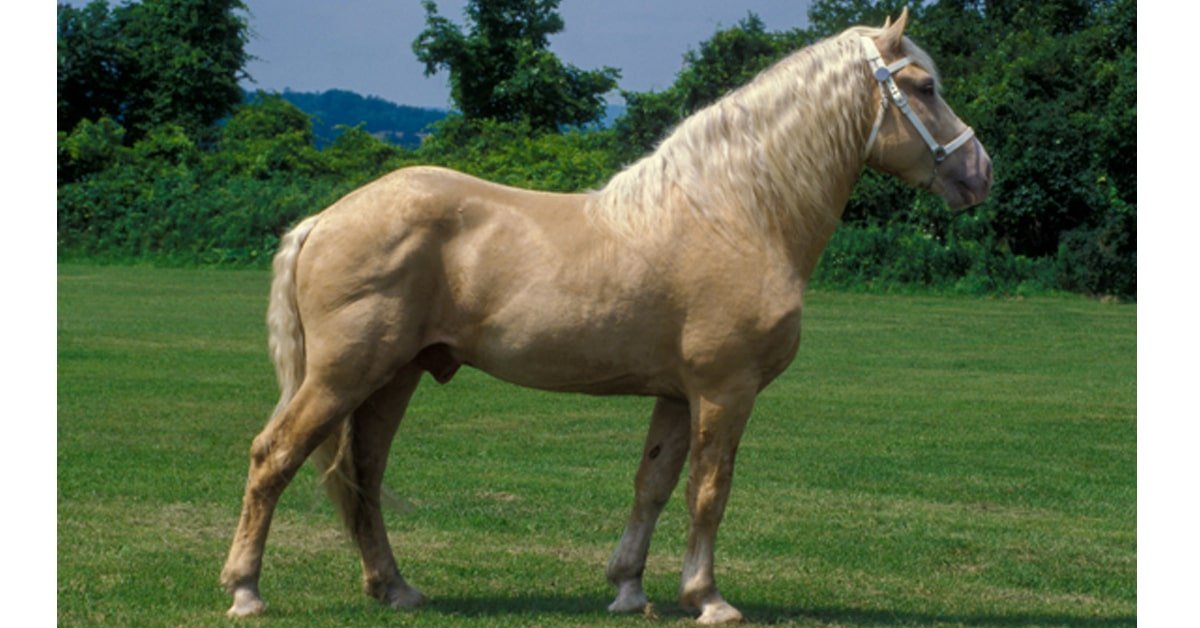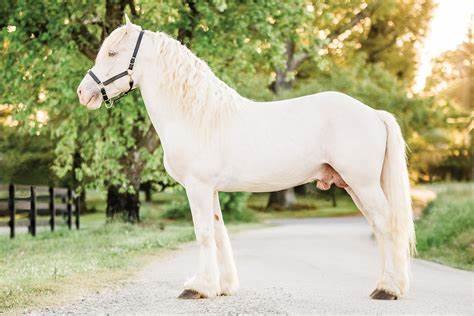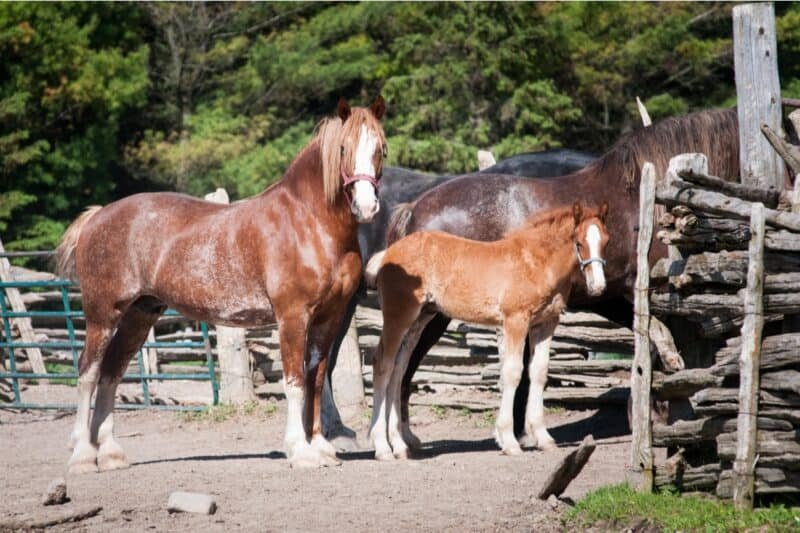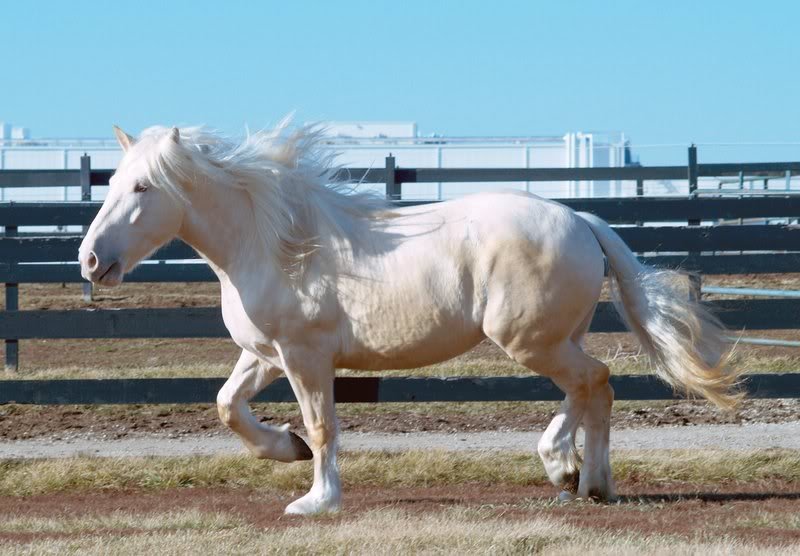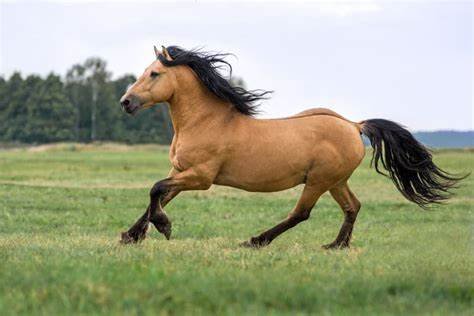The unique cream color seen in some draft horses, particularly in breeds like the American Cream Draft Horse, is one of the most distinctive and intriguing traits in the equine world. While many draft horses come in traditional colors like bay, black, and gray, the cream-colored coats of certain horses stand out for their beauty and rarity. But what causes this striking coat color? Is it just a random genetic variation, or is there a specific genetic process at work?
In this post, we’ll explore the genetics behind the cream color in draft horses, focusing on the genetic mechanisms that lead to this rare and beautiful coat color.
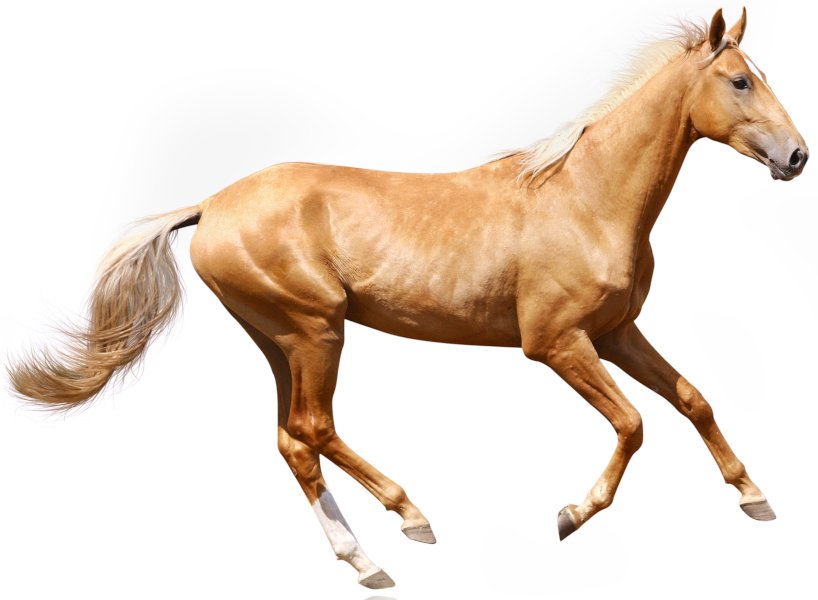
Understanding the Genetics of Horse Coat Color
Horse coat color is determined by a complex interaction of several genes. The base coat color of a horse is primarily controlled by a few major genes that regulate the production and distribution of pigments in the hair. The two main pigments in a horse’s coat are eumelanin (responsible for black and brown colors) and phaeomelanin (which produces red, chestnut, or palomino hues).
While most draft horses come in traditional colors, cream draft horses have a coat color that is influenced by a specific gene called the cream gene (Cr). This gene is responsible for diluting the base coat color, producing the light cream or goldish coat that defines this group of horses. Let’s break down the genetics further to understand how this works.
The Cream Gene (Cr): The Key to the Cream Coat
The cream gene, scientifically known as Cremello or Cream (Cr), is a dilution gene that affects the pigment in the horse’s coat. This gene is a dominant dilution modifier, meaning that when a horse carries one or more copies of the cream gene, the base coat color will lighten.
However, it’s important to note that the presence of the cream gene doesn’t necessarily mean a horse will always have a “cream” coat. The effect of the gene depends on what other coat color genes are present. To better understand this, we’ll take a look at how the cream gene interacts with other genes.
How the Cream Gene Works with Other Genes
The cream gene works by diluting the intensity of the base color in a horse. When the cream gene is paired with a red base coat (such as a chestnut or sorrel), it produces a palomino or cremello color. When paired with black or bay coats, the result can be a buckskin or perlino color.
For example:
- Chestnut + Cream Gene = Palomino (light gold coat with a white mane and tail).
- Bay + Cream Gene = Buckskin (a golden or tan coat with black points—mane, tail, and legs).
- Black + Cream Gene = Smoky Black or Perlino (a dilute black color, often with a cream or silver appearance).
For a horse to have the signature cream-colored coat, it generally needs to inherit two copies of the cream gene (one from each parent). This genetic combination is often referred to as cremello or perlino (if the horse has a bay or black base coat).
American Cream Draft Horses: A Unique Case
The American Cream Draft Horse is one of the most prominent breeds associated with the cream color. While many draft horses have dark coats, the American Cream Draft is unique in that it almost exclusively exhibits this lighter cream coat. This breed is believed to have originated from a single cream-colored mare named Old Granny, who carried the cream gene and passed it down to her offspring.
The cream coat in American Cream Draft Horses is typically seen in combination with a chestnut base color. The cream dilution gene lightens the chestnut coat, resulting in a soft, golden cream coat with white or flaxen manes and tails. The light color combined with their calm temperament and robust build gives American Cream Draft Horses their characteristic beauty.
Inheritance of the Cream Gene: Dominant vs. Recessive
The cream gene operates on a simple Mendelian inheritance pattern, which means it follows the basic rules of dominant and recessive inheritance. The gene for cream dilution is incomplete dominant, meaning that horses with one copy of the gene (heterozygous) will show a lightened coat color, but the effect will be less pronounced than if the horse carries two copies of the gene (homozygous).
- Heterozygous (one copy of the cream gene): The horse will have a diluted coat color, such as a palomino (if chestnut-based) or buckskin (if bay-based).
- Homozygous (two copies of the cream gene): The horse will have a more pronounced dilution, resulting in a cremello or perlino coat (almost white or very light cream in color).
When two horses that each carry the cream gene breed, the offspring have the following potential combinations:
- 25% chance of inheriting two copies of the cream gene (cremello or perlino).
- 50% chance of inheriting one copy of the cream gene (palomino, buckskin, or other diluted shades).
- 25% chance of inheriting no cream gene at all (normal base coat color).
This simple genetic mechanism explains why cream draft horses are rare—only a small percentage of draft horses carry the cream gene in such a way that the color is visibly expressed.
The Role of the Cream Gene in Draft Horse Breeds
Although the cream gene is most famously associated with the American Cream Draft Horse, it is not exclusive to this breed. Other draft breeds, such as the Belgian, Clydesdale, and Percheron, may also carry the cream gene, but it is not as commonly expressed in these breeds. The cream gene is particularly prized in the American Cream Draft, where it is seen as an important breed characteristic.
In most other draft breeds, the cream gene is rare or less pronounced. As a result, while these breeds can occasionally produce cream-colored individuals, the phenomenon is far less common and often not as strongly associated with the breed’s identity.
Conclusion
The cream color seen in draft horses, particularly in the American Cream Draft Horse, is the result of a fascinating genetic mechanism involving the cream dilution gene. This gene lightens the base coat color of the horse, producing the unique and beautiful cream-colored coats that make these horses stand out. The inheritance of this gene follows a simple Mendelian pattern, with homozygous individuals (carrying two copies of the cream gene) exhibiting the most striking cream colors, such as cremello or perlino.
While cream-colored draft horses are rare, they hold a special place in the equine world, particularly in breeds like the American Cream Draft. Their striking appearance, coupled with their calm demeanor and strong work ethic, make them beloved by many.







